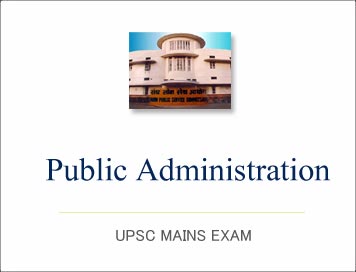(Online Course) Pub Ad for IAS Mains: Techniques of Administrative Improvement - The Programme Evaluation and Review Technique (PERT) (Paper -1)

(Online Course) Public Administration for IAS Mains Exams
Topic: Techniques of Administrative Improvement: The Programme Evaluation and Review Technique (PERT)
PERT is a sophisticated version of the network technique comprising a larger number of events and activities.
It was first developed for use in U.S. defence projects in connection with the execution of Pollaris missile programme in 1958.
PERT has refined the CPM technique in two respects: First, it has adopted statistical methods for estimating the time required for each activity. Instead of using one single time as in CPM, PERT calls for computing the expected time for each activity on the basis of weighted arithmetic mean of three different estimated times.
Secondly, the PERT system can even be applied to new projects for which no past experience is available.
PERT was original introduced for putting emphasis on time and performance of the work, and it did not concern itself with the cost of the work, subsequent years, PERT /TIME has been refined further by the introduction of PERT/COST. But the translation of time factor PERT into the cost element has made the PERT system complicated and imperfect in character, thereby restricting its wide use in complex projects.
Advantages: There are five special advantages of PERT:
(1) As it encompasses a number of events and activities at different levels
of the organisation, it calls systematic planning all down the line.
(2) It is instrumental for concentrating attention on critical or strategic
elements that may need any correction or modification.
(3) It compels managers to make advance planning for fitting the relevant parts
into an integrated whole.
(4) It fosters all-round co-ordination by way of looking into the time, quantity
and direction dimensions of co-ordination.
(5) It requires a system of forward-looking control with a view to completing
sequential events and activities in proper time.
Limitations: PERT is subject to some limitations:
(1) PERT gives emphasis on time only and ignores costs.
(2) The expected time for each activity of any nebulous programme cannot be
determined on a basis of certainty.
(3) PERT has special application in creative planning and it is not worthwhile
for adoption in routine planning for recurring events that take place in mass or
process production.
